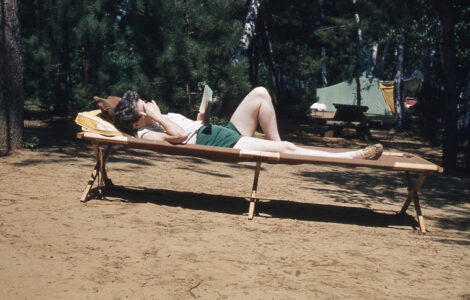Pollen seasons getting longer, more extreme
This is a wonderful time of year for most people. Days are warmer. Evenings are longer. And the trees and flowers are growing again. But for those who suffer from seasonal allergic rhinitis, more commonly known as hay fever and sometimes simply called allergies, this time of year can be challenging.
–
Pollen, allergies and allergens
–
Pollen is a powdery substance created by certain plants as part of their reproductive process. It’s generated by trees in the spring, grasses in the summer, and flowers (weeds) in the fall. It’s also one of the most common triggers of seasonal allergies. In fact, when inhaled, airborne pollen causes sneezing, congestion, runny nose and other cold-like symptoms in as many as one in six Americans, myself included.
According to the U.S. Centers for Disease Control and Prevention (CDC), pollen exposure can also trigger symptoms of allergic conjunctivitis, or inflammation of the lining of the eye (conjunctiva). CDC maintains that allergic conjunctivitis is found in as many as 7 out of 10 patients with hay fever. Symptoms include red, watery and/or itchy eyes. CDC warns, too, that exposure to pollen has been linked to asthma attacks and increases in hospital admissions for respiratory illness.
Medical costs linked to pollen exposure exceed $3 billion annually, with almost half of those costs linked to prescription medications.
Allergies are among the most common chronic health conditions in the world. According to the American College of Allergy, Asthma, and Immunology, more than 50 million Americans suffer with some type of allergy.
In people with pollen allergies, the immune system, which normally defends the body against attack by harmful intruders (e.g. infectious bacteria, viruses), mistakenly identifies harmless pollen as potentially lethal and overreacts, producing antibodies intended to defend the body from the innocuous pollen. This is called an allergic reaction,and the pollens that cause it are called allergens. Dust, pet hair, mold and cigarette smoke are also allergens.
–
Longer pollen seasons, higher pollen counts
–
A study published last year in the Proceedings of the National Academies of Sciences determined that the pollen season now starts about 20 days earlier than it did in 1990 and that seasonal pollen loads are around 21% higher than 1990 levels. A more recent article, “Projected climate-driven changes in pollen emission season length and magnitude over the continental United States” (Zhang, Y. M., Steiner, A. M.), published in the journal Nature Communications, projects that as the planet’s temperature rises and carbon dioxide concentrations increase, the pollen season will continue to lengthen and pollen counts will continue to rise.
Using computer simulations, climate scientists were able to predict that, because of changing temperature, the pollen season in the United States will start up to 40 days earlier and end 19 days or more later, by the end of this century. The article also predicts that annual total pollen emissions will increase by 16% to 40% in the United States for 13 of the most prevalent airborne plant pollens, and that in some areas, pollen concentrations could increase by three times their current levels.
According to CDC’s National Center for Environmental Health, higher pollen concentrations and longer pollen seasons can make susceptible individuals even more sensitive to allergens that can trigger flare-ups; potentially resulting in diminished productivity and attendance at school and work.
How long does allergic rhinitis last?
Allergic rhinitis isn’t a dangerous medical condition. Normally, there are no serious side effects. But if left untreated, symptoms will persist, potentially making you miserable for as long as you’re exposed to the irritating allergen, often several weeks, which can certainly have an impact on your quality of life, before it resolves on its own.
Cornell Health (health.cornell.edu) recommends the following self-care measures:
¯ Use oral antihistamines containing cetirizine, loratadine, or fexofenadine for runny nose, itching, and sneezing. Brand names include Zyrtec, Claritin, and Allegra.
¯ Use non-prescription corticosteroid nasal sprays (e.g. Flonase, Nasacort), which are most effective when used daily.
¯ Use a product with a decongestant such as pseudoephedrine or phenylephrine for nasal congestion. (Check with a pharmacist before using decongestants if you take stimulant medications and/or have a history of significant anxiety.)
¯ Avoid known allergens.
¯ Stay indoors on dry, windy days.
¯ Remove clothes worn outside and shower to remove pollen from hair and skin.
¯ Use an air conditioner when possible.
¯ Use a dehumidifier to keep indoor air dry.
¯ Use a vacuum cleaner with a HEPA filter.
When to see a medical provider:
¯ If you’re having any signs of a severe allergic reaction, such as swelling of the throat, loss of consciousness, dizziness (or lightheadedness), shortness of breath, nausea or vomiting, skin rash, or a rapid or weak pulse
¯ If you would like to be evaluated for allergies or get a prescription for allergy shots
–
One last thought
–
The facemasks we’ve been using to protect against COVID-19 can also work as barriers against pollen. The better the mask; the better the protection. And wearing glasses or sunglasses (or eye-protecting safety glasses when daily pollen counts are extremely high) can help with keeping pollen away from your eyes.


